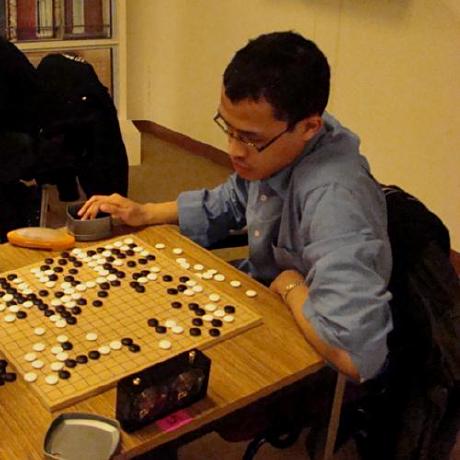
haskell-numbertheory
Exploration of primes, factorization and number theory through haskell
Haskell math for Primes, Factorization, and the first few problems of Project Euler
6 years ago I started learning Haskell This is a collection of programs I did while solving Project Euler problems and also programming praxis exercises I often far beyond what was asked to optimize compute time
What you will find :
- For primes :
- Prime Generation
- Sieve of Atkin, speed comparable to C (primegen 0.97 and primesieve v4.0)
- Sieve of Erathosthene
- Trial division
- Factoring Function including
- Trial division
- Continued Fraction Canditates method
- Elliptic Curve Factorization method (non-finished)
- Random Function
- Miller-Rabin Primality test
- Helper Functions
- Merge Sort
- Matrix
- Scalar Multiplication
- Polynomial Multiplication
- dot product
- tensor product
- Matrix product
- scalar Multiplication
- Number Theory
- x^n in a (semi)group
- Diophantine ? (see extended Euclide)
- Integer square root
- Modulo square root
- Modulo Exponentiation
- Legendre symbol
- Kronecker Symbol
- Arithmetic Function
- Euler Totient
- Moebius
- Sigma Function
- Harmonic Function
- Prime Generation
Unfortunately I probably lost the actual code used in Project Euler and other stuff like Pollard p-1, and pollard rho factorization methods
List of solved problems
- Add all the natural numbers below 1000 that are multiples of 3 or 5.
- Find the sum of all the even-valued terms in the Fibonacci sequence which do not exceed one million.
- Find the largest prime factor of 600851475143.
- Find the largest palindrome made from the product of two 3-digit numbers.
- What is the smallest number divisible by each of the numbers 1 to 20?
- What is the difference between the sum of the squares and the square of the sums?
- Find the 10001st prime.
- Discover the largest product of thirteen consecutive digits in the 1000-digit number.
- There is only one Pythagorean triplet, {a, b, c}, for which a + b + c = 1000. Find the product abc.
- Calculate the sum of all the primes below one million.
- What is the first triangle number to have over five-hundred divisors?
- Find the first ten digits of the sum of one-hundred 50-digit numbers.
- Find the longest sequence using a starting number under one million.
- Starting in the top left corner in a 20 by 20 grid, how many routes are there to the bottom right corner?
- What is the sum of the digits of the number 21000?
-
You are given the following information, but you may prefer to do some research for yourself.
1 Jan 1900 was a Monday. Thirty days has September, April, June and November. All the rest have thirty-one, Saving February alone, Which has twenty-eight, rain or shine. And on leap years, twenty-nine.
A leap year occurs on any year evenly divisible by 4, but not on a century unless it is divisible by 400. How many Sundays fell on the first of the month during the twentieth century (1 Jan 1901 to 31 Dec 2000)?
- Find the sum of digits in 100!
-
The Fibonacci sequence is defined by the recurrence relation:
Fn = Fn1 + Fn2, where F1 = 1 and F2 = 1. Hence the first 12 terms will be:
F1 = 1 F2 = 1 F3 = 2 F4 = 3 F5 = 5 F6 = 8 F7 = 13 F8 = 21 F9 = 34 F10 = 55 F11 = 89 F12 = 144 The 12th term, F12, is the first term to contain three digits.
What is the index of the first term in the Fibonacci sequence to contain 1000 digits?
-
Euler discovered the remarkable quadratic formula:
n^2+n+41
It turns out that the formula will produce 40 primes for the consecutive integer values 0n390n39. However, when n=40,402+40+41=40(40+1)+41n=40,402+40+41=40(40+1)+41 is divisible by 41, and certainly when n=41,412+41+41n=41,412+41+41 is clearly divisible by 41.
The incredible formula n^279n+1601 was discovered, which produces 80 primes for the consecutive values 0n790n79. The product of the coefficients, 79 and 1601, is 126479.
Considering quadratics of the form:
n^2+an+b, where |a|<1000|a|<1000 and |b|1000|b|1000
where |n||n| is the modulus/absolute value of nn e.g. |11|=11|11|=11 and |4|=4|4|=4 Find the product of the coefficients, aa and bb, for the quadratic expression that produces the maximum number of primes for consecutive values of nn, starting with n=0n=0.
-
Consider all integer combinations of ab for 2 a 5 and 2 b 5:
2^2=4, 2^3=8, 2^4=16, 2^5=32 3^2=9, 3^3=27, 3^4=81, 3^5=243 4^2=16, 4^3=64, 4^4=256, 4^5=1024 5^2=25, 5^3=125, 5^4=625, 5^5=3125 If they are then placed in numerical order, with any repeats removed, we get the following sequence of 15 distinct terms:
4, 8, 9, 16, 25, 27, 32, 64, 81, 125, 243, 256, 625, 1024, 3125
How many distinct terms are in the sequence generated by ab for 2 a 100 and 2 b 100?
-
The series, 1^1 + 2^2 + 3^3 + ... + 10^10 = 10405071317.
Find the last ten digits of the series, 1^1 + 2^2 + 3^3 + ... + 1000^1000.